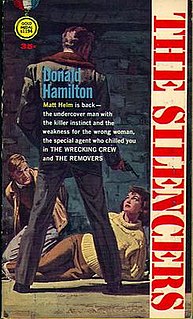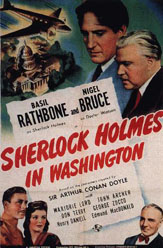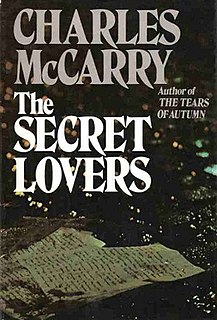Plot summary
The book was apparently written after the troubled year of 1968, which saw the assassination of Martin Luther King Jr. and of Robert F. Kennedy a few weeks later, as well as political turmoil and anti-Vietnam demonstrations in the United States. Mac, the director of Helm's secret government agency, learns that a dangerous enemy operative, Hans Holz, also known as the Woodman, has been contracted, presumably by the Soviets, to kill whichever candidate is elected in the upcoming elections in November 1968. The Woodman, it appears, has also recently been responsible for the death of Michael Kingston, an agent with whom Helm has just worked in an earlier book. Helm, the veteran counter-assassin, is ordered by Mac to get into position to remove the Woodman—permanently. Not to avenge Kingston — Mac's agents are supposed to be able to take care of themselves — but to forestall any more political chaos.
As frequently happens in Hamilton's books, however, Helm is not sent to stalk Holz directly. He is inserted into an operation currently being carried out by a rival government agency, one that is trying to thwart Communist plans to obtain secret information about a major American-Canadian security project called the Northwest Coastal System. A man named Grant Nystrom has been recruited by the Communists to take delivery at five different points of microfilms of the project as he travels through the Northwest and into Alaska playing the role of a dedicated fisherman. Both Nystrom and his trained Labrador dog have recently been murdered, however, and Helm resembles Nystrom enough to enable him to take his place.
A standard plot device in Helm stories is to have a second government agency working either at complete cross-purposes to Mac's agency, or at least at semi-cross-purposes. Helm is recruited to apparently carry out the instructions of the second agency but actually has his own mission to accomplish, regardless of how this may finally thwart the wishes of the other agency. In The Interlopers this tension runs throughout the book—and is complicated by the fact that a mysterious third party, the so-called interlopers, appears with a Grant Nystrom lookalike of their own, complete with his own black Labrador, in an apparent attempt to accumulate the secret microfilm for their own purposes.
There are, as in all Helm books, at least two beautiful, and somewhat mysterious, women, whose patriotic affiliations are questionable right to the end of the story, and who cause both complications and murderous attacks on Helm. He survives the attacks, however, in the course of which he kills, mostly by guns, but occasionally by knife, at least six or seven enemy operatives of various loyalties. On page 89, in a motel cabin surrounded by dead bodies, he is obliged to set the scene for the forthcoming policemen by leaving behind the small four-inch-bladed knife that has been featured in most of the books since the very first — "it had been given to me by a woman, now dead, who'd once meant a good deal to me — but this was no time for sentimentality."
Other standard features in many of the Helm books play their roles here. Hamilton likes to carry an occasional character from one story to the next. One of the numerous conflicting groups interested in obtaining the secret microfilm is apparently directed by an unseen Chinese agent named Mr. Soo. Although he himself makes no appearance in The Interlopers, he had come to Helm's aid in the previous book, The Menacers, and will show up again in a future book.
Another feature is the last page or so of Hamilton's books, after the action has been completed. A minor (but beautiful) female character unexpectedly reappears, either in need of physical and spiritual recuperation herself or there to offer it to the severely tested Helm. As usual, there is a two- or three-word final paragraph:
- "It was Mac's idea of a safe rest and rehabilitation for both of us — simpler, cheaper, and less obvious than turning the wigpickers loose on us; and more effective if it worked.
- "It worked."
And as in many of the books, Helm also finds time to reflect on the deficiencies of Detroit automakers: "Even commercial vehicles are encumbered with a lot of Mickey Mouse gadgets these days — that big, rugged, powerful truck engine was decorated with a cute little automatic choke, for God's sake! Apparently modern-day truck drivers are considered too stupid and feeble to pull a knob out of a dashboard."
One feature in The Interlopers that is not a standard Hamilton plot device occurs on page 175 when, for one of the very few times in the series, the super-competent and super-foresighted Helm falls into an enemy ambush that he had not planned for or anticipated. After waking up bound hand and foot, he reflects "grimly" that "knowing that the critical moment of the mission had to be close at hand, I'd let the frantic howling of a year-old pup send me rushing blindly into an ambush any first-year trainee could have avoided in his sleep."
In spite of this single moment of weakness, however, Helm, with a little help from various female characters as well as his "year-old pup", manages to carry out his mission successfully.
Spy fiction, a genre of literature involving espionage as an important context or plot device, emerged in the early twentieth century, inspired by rivalries and intrigues between the major powers, and the establishment of modern intelligence agencies. It was given new impetus by the development of fascism and communism in the lead-up to World War II, continued to develop during the Cold War, and received a fresh impetus from the emergence of rogue states, international criminal organizations, global terrorist networks, maritime piracy and technological sabotage and espionage as potent threats to Western societies. As a genre, spy fiction is thematically related to the novel of adventure, the thriller and the politico-military thriller.

Jan Oskar Sverre Lucien Henri Guillou is a French-Swedish author and journalist. Guillou's fame in Sweden was established during his time as an investigative journalist, most notably in 1973 when he and co-reporter Peter Bratt exposed a secret and illegal intelligence organization in Sweden, Informationsbyrån (IB). He is still active within journalism as a column writer for the Swedish evening tabloid Aftonbladet. Among his books are a series of spy fiction novels about a spy named Carl Hamilton, and a trilogy(+) of historical fiction novels about a Knight Templar, Arn Magnusson. He is the owner of one of the largest publishing companies in Sweden, Piratförlaget, together with his wife, publisher Ann-Marie Skarp, and Liza Marklund.
The Carl Hamilton novels is a book series by Swedish author and journalist Jan Guillou centered on the fictional Swedish spy Carl Hamilton. The main character is an elite military officer working for the Swedish Security agency and Intelligence agency during the end of the Cold War, residing in Stockholm but active internationally.
A canary trap is a method for exposing an information leak by giving different versions of a sensitive document to each of several suspects and seeing which version gets leaked. It could be one false statement, to see whether sensitive information gets out to other people as well. Special attention is paid to the quality of the prose of the unique language, in the hopes that the suspect will repeat it verbatim in the leak, thereby identifying the version of the document.
Donald Bengtsson Hamilton was an American writer of novels, short stories, and non-fiction about the outdoors. His novels consist mostly of paperback originals, principally spy fiction, but also crime fiction and westerns, such as The Big Country. He is best known for his long-running Matt Helm series (1960-1993), which chronicles the adventures of an undercover counter-agent/assassin working for a secret American government agency. The noted critic Anthony Boucher wrote: "Donald Hamilton has brought to the spy novel the authentic hard realism of Dashiell Hammett; and his stories are as compelling, and probably as close to the sordid truth of espionage, as any now being told."

Lester Joseph Gillis, also known as George Nelson and Baby Face Nelson, was an American bank robber who became a criminal partner of John Dillinger, when he helped Dillinger escape from prison, in Crown Point, Indiana. Later, the Federal Bureau of Investigation (FBI) announced Nelson and the remaining gang of bank robbers were collectively "Public Enemy Number One."
Matt Helm is a fictional character created by American author Donald Hamilton (1916-2006). Helm is a U.S. government counter-agent, a man whose primary job is to kill or nullify enemy agents—not a spy or secret agent in the ordinary sense of the term as used in most spy thrillers.

The Silencers is the title of a 1962 spy novel by Donald Hamilton, the fourth in a series of books featuring assassin Matt Helm.

The Thief is a 1952 American film noir crime film directed by Russell Rouse and starring Ray Milland. The film is noted for having no spoken dialogue; the only verbal communication present in the film is represented through closeup shots of two telegrams.

Death of a Citizen is a 1960 spy novel by Donald Hamilton, and was the first in a long-running series of books featuring the adventures of assassin Matt Helm. The title refers to the metaphorical death of peaceful citizen and family man Matt Helm and the rebirth of the deadly and relentless assassin of World War II.

The Girl, the Gold Watch & Everything (1962) is a science fiction novel by the American writer John D. MacDonald.

Matt Helm is an American mystery television series which aired on ABC from September 20, 1975 to January 3, 1976. The title character was played by Anthony Franciosa.

Murderers' Row is the title of a 1962 spy novel by Donald Hamilton. It was the fifth novel featuring his creation Matt Helm, a Second World War assassin recruited as a counter-agent by a secret American agency. This was the last Matt Helm novel to not use Hamilton's naming convention of The (Verb)-ers. The expression "murderers' row" had been used previously to describe the batting line-up of the New York Yankees baseball team in the late 1920s.

The Silencers is a 1966 American Pathécolor spy film spoof motion picture released in 1966 and starring Dean Martin as agent Matt Helm. It is loosely based upon and takes its title from the 1962 novel The Silencers by Donald Hamilton, and also adapts elements of Hamilton's first Helm novel, Death of a Citizen (1960).

The Intriguers, first published in 1972, was the fourteenth novel in the Matt Helm spy series by Donald Hamilton.

The Intimidators was the fifteenth novel in the Matt Helm secret agent novel series by Donald Hamilton. It was first published in 1974.

The Vanishers is the title of a spy novel by Donald Hamilton which was first published in 1986. It is the twenty-third book in a series of novels featuring the adventures of assassin Matt Helm.

Sherlock Holmes in Washington (1943) is the fifth film in the Basil Rathbone/Nigel Bruce series of Sherlock Holmes movies. The plot is an original story not based on any of Sir Arthur Conan Doyle's Holmes tales.

The Golden Retriever is a British breed of retriever dog of medium size. It is characterised by a gentle and affectionate nature and a striking golden coat. It is commonly kept as a pet and is among the most frequently registered breeds in several Western countries. It is a frequent competitor in dog shows and obedience trials; it is also used as a gundog, and may be trained for use as a guide dog.

The Secret Lovers, published by E.P. Dutton in 1977, was the third of seven novels by the American novelist Charles McCarry to feature an American intelligence agent named Paul Christopher. It takes place in 1960 and '61, a year after the events in the first Christopher novel, The Miernik Dossier, published in 1973, and three years before the beginning of The Tears of Autumn, published in 1974, which was actually the second book McCarry wrote about Christopher. Later books by McCarry, ten in all as of 2013, expanded from focusing solely on Christopher into what might be considered a chronicle of the Christopher universe: two novels feature his cousins, the Hubbards, and in many of the Christopher novels his father, mother, one-time wife, and daughter play important and recurring roles. Also in this universe is a 1988 historical novel, The Bride of the Wilderness, about Christopher's ancestors in 17th-century England, France, and Massachusetts. McCarry had been an undercover operative for the Central Intelligence Agency for nine years before turning to writing, and his books were hailed for their apparent authenticity and realistic depiction of tradecraft. The Miernik Dossier received excellent reviews, and instantly established McCarry's reputation as one of the foremost American novelists of espionage. Like all of McCarry's books, this one displays "an almost Jamesian awareness of [its] European locale, the special authenticity of a loving expatriate writing of an adopted foreign land."















